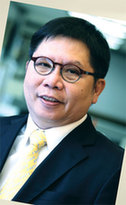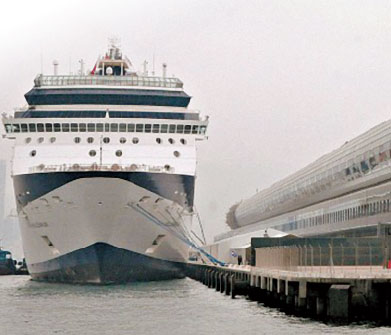Too big to handle
Updated: 2013-09-13 07:14
By Joseph Li(HK Edition)
|
|||||||
The huge intake of mainland visitors has resulted in Hong Kong's major tourism spots being saturated and local people's daily lives disrupted. To tackle the problem, Travel Industry Council Chairman Michael Wu Siu-ying suggests limiting the number of entries of day trippers and couriers. Joseph Li writes.
Visitor arrivals will exceed 50 million this year, with 72 percent of them coming from the Chinese mainland, Michael Wu Siu-ying, chairman of Travel Industry Council of Hong Kong, predicts. He worries that if the growth in the number of mainland visitors continues at this pace, the city's handling capacity and public facilities will soon reach breaking point.
"Over the years, mainland arrivals have seen double-digit increases annually," Wu said in an exclusive interview with China Daily. "Last year, more than 46 million visitors came, with 70 percent coming from the mainland. In the first quarter of 2013, a 12-percent growth was recorded and we expect visitor arrivals to surpass 50 million this year."
While the number of visitors from the mainland is increasing, tourist numbers from Europe, America and Japan are declining due to economic downturn. Wu has observed several trends.
Changing patterns
Of the nearly 35 million mainland visitors, half stay overnight. The majority of the other half are day trippers from Guangdong Province. Since it's easy for people from Guangdong to get here, their behavior patterns have also been changing.
|
Michael Wu fears that if the mainland visitor influx continues to accelerate, it will break Hong Kong's handling capacity and public facilities soon. Parker Zheng / China Daily |
"They come here shopping, attending concerts and football matches. They stay for several hours and leave at night. Many come on weekdays, instead of weekends and long holidays," said Wu.
"In the past, they preferred buying high-priced goods such as brand name watches and handbags. They now eye mid-priced products like sports gear, clothes and even daily sundries such as baby formula because they have confidence in the quality of goods sold in Hong Kong.
"The places they go to are no longer restricted to traditional shopping areas like Tsim Sha Tsui and Causeway Bay. They now go to as far as Sheung Shui (along the East Rail), Tuen Mun and Tung Chung (near the airport)."
In terms of tourism facilities, Wu reckons there are adequate attractions (including Ocean Park, Disneyland, Avenue of Stars, Wong Tai Sin Temple and the wax museum) and hotel rooms to accommodate overnight visitors.
Mainland visitors, however, are helping to create crowded conditions on MTR trains. There's still room for local people during rush hours but riding on MTR can be a tight squeeze and not very comfortable.
"It is rather difficult for the travel industry to plan for nearly 18 million day trippers. They don't need hotels, or tour guides because their main purpose here is shopping," he commented. "Mainland visitors, including parallel traders who buy large quantities of goods to be re-sold for profit, may enter Hong Kong many times daily and buy daily sundries like baby formula, cooking oil, instant noodle, shampoo and toothpaste. These goods are also in demand among the local people. This has affected the daily lives of local citizens, causing a nuisance and discontent among Hong Kong people.
"It has become a social problem and so the government, not the tourism sector, should do something. It is hard to close the door on the mainlanders provided they hold valid travel documents. Again, it was the Hong Kong SAR government that asked the central government to approve the Individual Visit Scheme to rescue the economy after the SARS outbreak in 2003."
Wu knows the SAR Government is conducting an internal review on tourism while Chief Executive Leung Chun-ying has openly said Hong Kong should not blindly pursue visitor growth.
Administrative measures
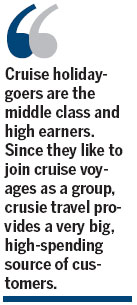
To ease the situation, Wu suggests targeting day trippers, particularly Shenzhen residents who hold multiple entry permits to Hong Kong.
"The SAR government can ask the Shenzhen authorities to shorten the validity of the multiple entry visas from 12 to 3-6 months, while the application period could be prolonged to prevent too many people from coming at the same time.
"And as ordinary people won't go to the same place frequently, the number of visits should be reduced to 12 to 20 per year rather than unlimited visits, knowing those who travel to and from Hong Kong many times daily are definitely couriers," he proposed.
Wu discloses that the government has consulted him on ways to control mainland visitor growth. He says he has reflected the tourism sector's views to the government. "Perhaps the government is doing something," he said.
"The multiple entry arrangement aims to provide convenience to travellers but it is being abused by the couriers. The government needs not implicate bona fide tourists, but should combat the couriers in order not to overstretch Hong Kong's handling capacity and resources, and at the same time minimize nuisance to local people and ease their grievances."
|
Cruise holidays have great potential in Hong Kong, with international cruise companies willing to send more liners to Asia /Hong Kong and reserve greater quotas for Asian tourists. |
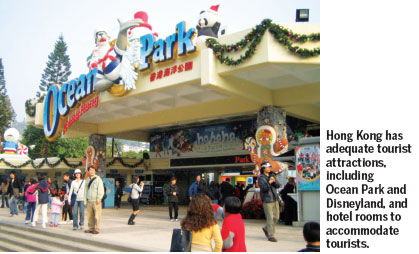
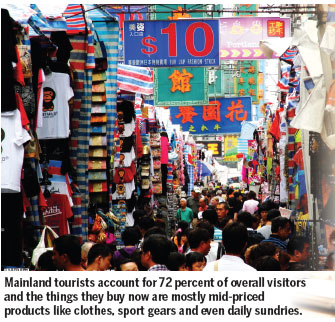
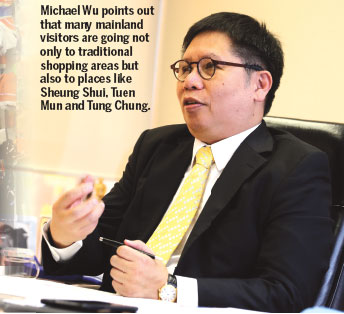
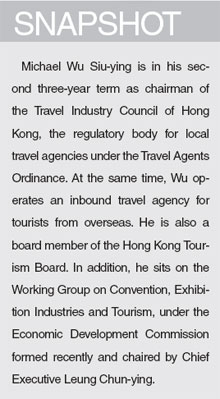

(HK Edition 09/13/2013 page8)
